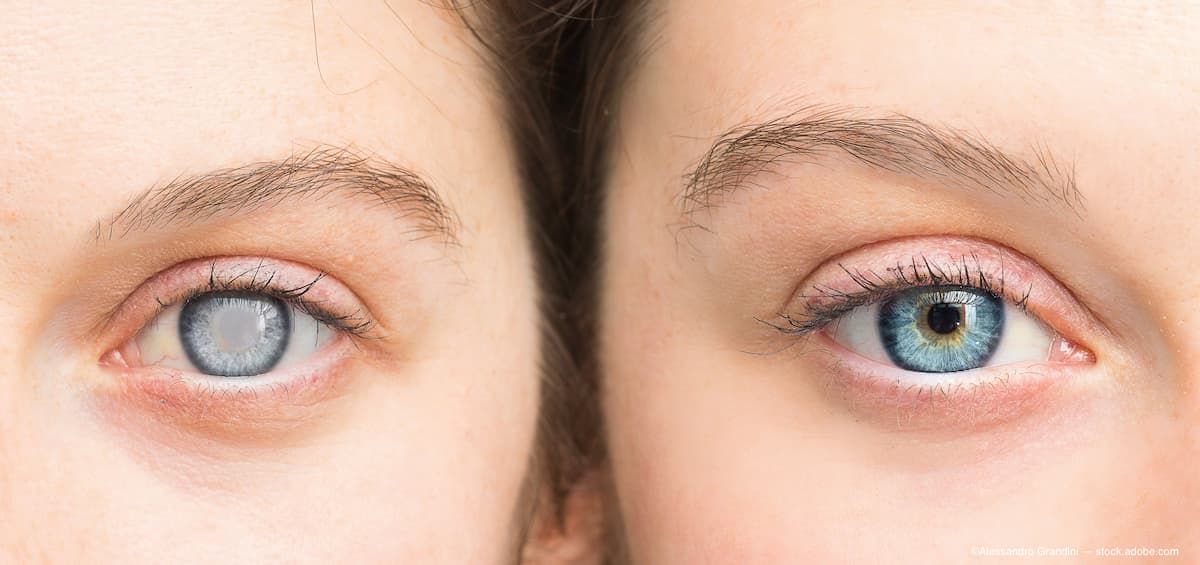Article
When pseudoexfoliation glaucoma patients need cataract surgery
Author(s):
A carefully packed surgical toolkit can optimize cataract surgery outcomes.

Patients with pseudoexfoliation glaucoma needing cataract surgery present several important challenges.
At the ASCRS-ASOA annual meeting, being held May 3-7 at the Convention Center in San Diego, CA, Amy D. Zhang, MD, discussed strategies to facilitate safe surgery and delivery of a successful outcome.
Dr. Zhang, assistant professor of Ophthalmology, University of Michigan, Ann Arbor, said that the first consideration is to undertake a careful preoperative evaluation to recognize pseudoexfoliation and its associated features that can increase the risk for surgical complications. Fibrillar deposits on the anterior capsule are a classic lesion for identifying pseudoexfoliation, but white exfoliative material around the pupillary border is a telltale sign that is more subtle and may be overlooked.
Eyes with pseudoexfoliation may have small, poorly dilating pupils and zonular weakness, and the preoperative evaluation should also assess for the presence of these issues.
“Zonular laxity can be seen as phacodonesis with eye movement as well as by a decrease in anterior chamber depth,” said Dr. Zhnag.
“Anterior chamber depth is important to assess considering a study by Küchle et al. that reported a fourfold increased risk of zonular instability and/or vitreous loss in eyes with an anterior chamber depth ACD <2.5 mm.”
Planning the surgery
Depending on the status of the glaucoma, surgeons will decide whether to do cataract surgery alone or a combined procedure. Parameters to consider include IOP, medication tolerance, glaucoma stability, and glaucoma severity.
“Certainly, you probably would not choose to do phacoemulsification alone in a patient who has uncontrolled IOP or intolerance to medication,” Dr. Zhang said.
Her choice of glaucoma procedure depends on the severity of glaucoma. For patients with mild to moderate glaucoma, Dr. Zhang said she will combine a minimally invasive glaucoma surgery with phacoemulsification and use either the trabecular microbypass microstent (Istent, Glaukos) or ab interno trabeculectomy (Trabectome, NeoMedix) because there are data to show they have good outcomes in patients with pseudoexfoliation.
For patients with severe glaucoma, trabeculectomy with mitomycin-C is still the glaucoma surgery of choice to combine with phacoemulsification, Dr. Zhang said.
Intraoperative considerations
Intraoperative strategies are designed to manage risks. Dr. Zhang recommended using a soft shell technique that combines the use of a dispersive ophthalmic viscosurgical device (OVD) to coat the endothelium and a cohesive OVD that flattens the anterior capsule and maintains space in the anterior chamber.
“When injecting OVD, however, it is important not to overinflate the anterior chamber because that will cause zonular stress,” she cautioned.
If pupil dilation is not sufficient, a pupil expansion device should be used to maintain adequate pupil size.
Dr. Zhang recommended creating a capsulorhexis that is 5- to 6-mm in diameter. Among other benefits, a well-centered, generously sized capsulorhexis will help maintain IOL centration long-term.
“It should also be noted that difficulty creating the capsulorhexis could be a sign of zonular instability,” Dr. Zhang said.
As another tip for minimizing zonular stress, Dr. Zhang said she likes to perform viscodissection in addition to hydrodissection to mobilize the nucleus before proceeding with phacoemulsification.
“If you notice zonular dehiscence, consider use of capsule retractors that will facilitate hydrodissection and cataract fragmentation,” she said.
“Capsular tension rings will support areas of zonular dehiscence and allow for optimal IOL centration.”
Alternatives
As a caveat, Dr. Zhang said that if the area of dehiscence exceeds 4 clock hours, it may be better to use modified capsular tension segments or suture modified capsular tension rings.
Discussing lens removal, Dr. Zhang said that prechopping can help minimize stress on the zonules. She noted that she favors a horizontal chop technique and advised against using a divide and conquer approach.
Other tips for minimize zonular stress include prolapsing the lens out of the bag before emulsifying it and using tangential stripping instead of radial stripping for cortex removal.
For IOL style, a three-piece IOL might be preferred over a single-piece implant in any patient with signs of zonular instability, Dr. Zhang said.
She noted the need to perform a limited anterior vitrectomy if any vitreous is seen, but to be careful to fill the anterior chamber with OVD prior to removing instruments from the eye.
Discussing IOP, Dr. Zhang said that extensive irrigation and aspiration may lower the risk of IOP spikes after surgery by helping to remove pseudoexfoliative material. To minimize postoperative IOP elevations, Dr. Zhang said she also likes to inject carbachol 0.01%.
“Still, it is important to observe patients for postoperative IOP spikes, especially if they are having cataract surgery alone,” she added.
Increased and prolonged postoperative inflammation are also concerns after cataract surgery in eyes with pseudoexfoliation. Therefore, anti-inflammatory medications (topical corticosteroids and NSAIDs) should be used for a longer duration.
Disclosures:
Dr. Zhang has no relevant financial interests to disclose.





